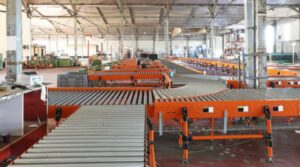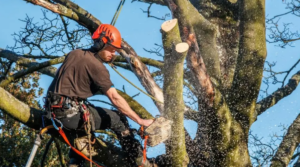
Sustainable landscaping uses practices that improve the local environment and wildlife, reducing energy and water consumption and limiting chemical fertilizers and pesticides. Several strategies include using mulch, permeable hardscapes, planting trees, etc.
Plant native plants already adapted to the microclimate of your commercial property, which will reduce maintenance costs by reducing the need for supplemental fertilizer and pesticides. Deciduous trees on buildings’ south and west sides block the summer sun’s heat, lowering cooling costs.
Plants
Plants are an essential part of every commercial landscaping installation Memphis TN. Sustainable landscaping techniques use native plants adapted to the local climate and environment. They are also low-maintenance, cost-efficient, and visually appealing.
Choosing drought-tolerant and native plants helps reduce the water used to maintain a landscape. Using absorbent materials, such as pavers instead of concrete for driveways, helps reduce water runoff and pollution.
Many harsh chemicals and gas-powered equipment needed to maintain traditional landscapes can pollute local water sources, harming fish and other wildlife. Sustainable landscaping avoids using these harmful products by using natural pest control methods and planting only what is necessary to achieve the desired look. Adding deciduous trees to the south and west sides of a structure can also assist in blocking the summer sun’s rays, lowering energy costs and air conditioning expenditures. Winter is when deciduous trees lose their leaves. It also allows sunlight to warm the structure in winter, lowering energy bills.
Water
While green landscaping strongly focuses on planting native plants, it also works to conserve the water supply, avoid wasteful usage and use natural resources where possible. For example, sustainable commercial landscaping uses rainwater to hydrate plantings instead of the standard watering system. It helps reduce waste from fertilizers and gas-powered equipment and can cut utility bills and environmental costs.
Another way that sustainable landscape practices can help is by using porous materials instead of concrete and asphalt for hardscape structures such as driveways and patios. It allows water to soak into the ground and prevents storm runoff, which can carry pollutants that harm local water supplies.
When implementing eco-friendly landscaping ideas, it’s important to remember that sometimes the best option is to leave things alone. Leaving grass that isn’t in use for a portion of the property can help reduce noise pollution and emissions and reduce the need for fuel-powered lawn equipment.
Soil
Soils are complex ecosystems buried within mineral layers. By generating and absorbing dust, gases, and other substances, including methane, carbon dioxide, and water vapor, they change the atmosphere and provide the environment for plant growth. Carbon is one of the recyclable nutrients that soils process.
Sustainable commercial landscaping uses native plants already built to withstand the climate conditions of a geographic area and provide a natural habitat for local wildlife. They do this without supplemental fertilization and pesticides, which are expensive and harmful to the environment.
A sustainable landscape design utilizes environmentally friendly water irrigation systems to hydrate plantings and minimize wasted water from evaporation. For example, a permeable paver driveway can be used rather than concrete, and it is better to water in the early morning or evening when temperatures are lower and less likely to evaporate. Along with the positive effects on the environment, these small changes can result in considerable cost savings.
Maintenance
As businesses commit to sustainability, they realize that a greener landscape is good for the environment and makes financial sense. The cost of maintenance on sustainable sites is less than conventional ones, thanks to better use of native plants and absorbent materials.
Planting native trees and shrubs naturally fitting in a region reduces the need for water, fertilizers, and insecticides. They are adapted to the weather, and wildlife relies on them for food and shelter. Incorporate permeable materials like gravel or sand into landscapes instead of concrete and bricks.
Reusing materials on a site, such as composting grass clippings and plant trimmings or reusing mulch, reduce waste sent to landfills. Purchasing recycled-content landscaping products, such as plastic edging and lumber, conserves natural resources and strengthens markets for these materials. Also, consider harvesting rainwater or roof runoff to water your plants – a great way to save water and energy.







